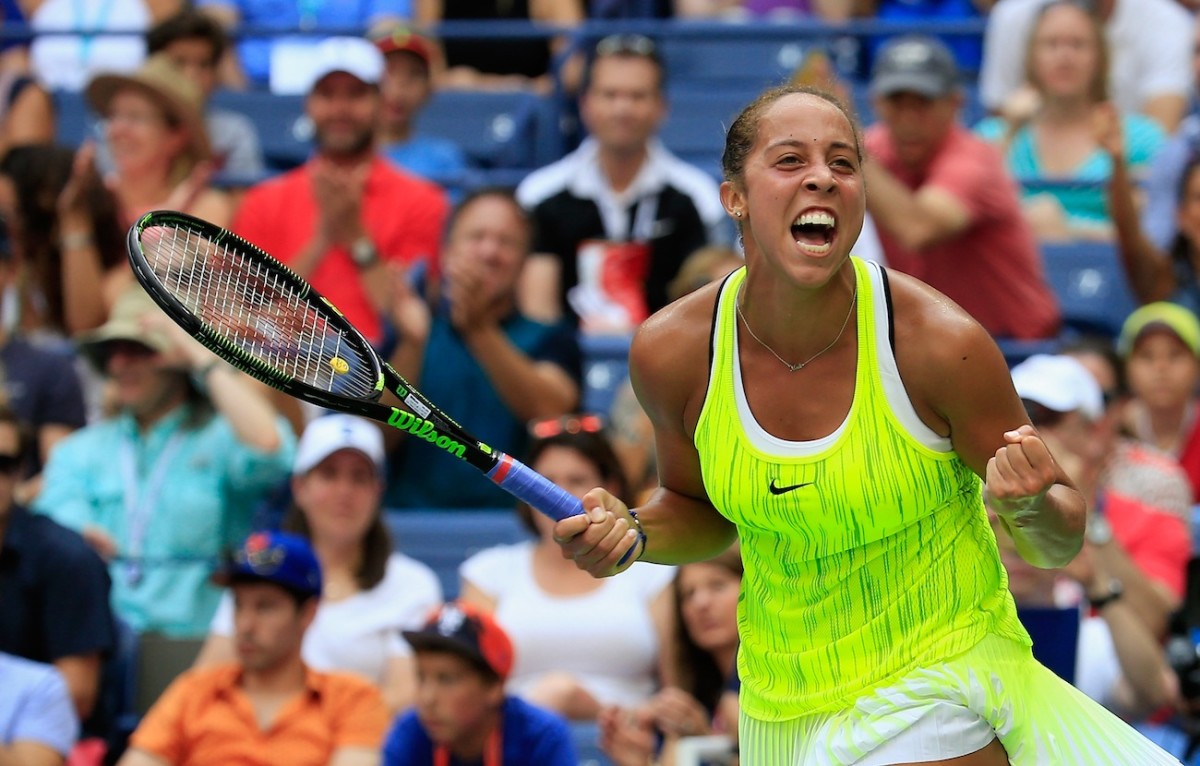Women's Tennis: What's Next?


Celebrities from reality TV star Kim Kardashian to hockey player Wayne Gretzky had shown up at the 2015 U.S. Open to watch Serena Williams make tennis history. It had been a monumental year for the sport. With Williams on the brink of completing the first Grand Slam since Steffi Graf, the U.S. Open women’s final sold out before the men’s did.
However, in a stunning upset, Williams lost to unseeded Roberta Vinci in the semifinals. While Williams wiped a tear out of her eye, and disappointed spectators around the world shut off their TVs, many wondered the same question: Where does women’s tennis go from here? What does the future of women’s tennis look like?
By the future, of course, we mean after Williams—eventually—slows down. She lost that U.S. Open but afterward reached four Grand Slam finals and won two of them, including the 2017 Australian Open.
Since Williams turned pro in 1995, she has won 23 Grand Slam singles titles, and she and her older sister, Venus, have dominated women’s tennis ever since. The Williams sisters have won over 40% of the grand slam women’s singles championships since 2000, and Serena is inarguably one of the greatest athletes in the world.
In January, they played against each other in the finals of the Australian Open, the year’s first Grand Slam event. Venus is 36, and Serena is 35. Both will likely retire soon. And when they do, how will their departure impact the world of women’s tennis?
“It’s probably going to be like basketball after Michael Jordan,” says L. Jon Wertheim, a tennis writer and commentator and the deputy managing editor of Sports Illustrated. “The sport won’t go away; they still held the NBA Finals the year after he retired, but it took a few years for a new star to emerge. It will be a big loss.”
Serena, especially, attracts many fans, and those fans may very well leave the game when she does. However, when she retires, there will be no clear No. 1 player, and this might be a good thing.
“New champions come right behind [Venus and Serena], and they keep things interesting. It keeps evolving,” says WTA president Micky Lawler. While the inevitable loss of the Williams sisters will be devastating to tennis, it could also make the game more competitive and exciting. Rivalries will develop and the sport can evolve.
As we delve into a new era of tennis, who are the young rising stars? Like many others, broadcaster and former tennis player Mary Carillo has high hopes for American Madison Keys, who finished 2016 at No. 8 in the world and is the best American after Serena Williams. Many consider Keys, who is 21, to be one of the most promising players in women’s tennis. In terms of young Americans, many also consider 23-year-old Sloane Stephens, who is ranked 35th in the world, and 17-year-old Catherine Bellis, who is 75th, to be leading prospects.

But why aren’t there more talented young women ready to take Serena’s place? There are many reasons, starting with the disparity between men’s and women’s tennis.
As nice as it would be to say that inequality between men and women in sports is a thing of the past, the prize money and exposure difference between men and women doesn’t indicate that. “It’s about sponsorships, it’s about companies, media rights, who’s paying for men’s tennis versus women’s tennis, and who’s filling up the seats in men’s events versus women’s events,” says Eleni Rossides, the president of the Washington Tennis & Education Foundation. The New York Times reported last year that of “the top 100 earners on the WTA and ATP Tours...female tennis players [earn] 80 cents on each dollar men earn.”
However, the gap between the women’s game and the men’s game could be a result of more than just sponsorships. During the 2015 Australian Open, after winning a thrilling match, Eugenie Bouchard was asked to twirl for the fans. The focus on women’s beauty over their athleticism is a struggle in all sports at many different levels.
Says Keys, “There’s a lot of comments made about female athletes that takes away from them doing their sport and them sacrificing.” Many agree that this type of attitude hinders women’s tennis—as well as other women’s sports—from reaching its full potential.
The Next Generation
Tennis is also at a disadvantage when it comes to being able to develop talent and making the sport available to young people. “Kids are getting away from physical sports,” says Carillo. “It’s not as big a sport as in this country as it was in the ’70s.”
The sport lags far behind football, basketball, and baseball when it comes to youth participation. In 2013, ESPN reported that only 8% of all kids play tennis. So what is preventing more young people from getting involved?
“Tennis is competing with very established seasonal sports,” explains Lawler. And Carillo is concerned about the constant need for grown-up assistance in terms of transportation and equipment when kids play tennis. This reliance on adults can make it hard for kids to go out and play tennis on their own.
Tennis organizations across the country are working to get more kids interested in playing the sport. Groups like the Women’s Tennis Federation and the United States Tennis Association are working to form programs that can overcome these challenges and get more kids playing.
“The advent of 10-and-under tennis has been helpful for getting younger kids interested in tennis,” says Rossides, whose organization helps children from low-income households get involved in the sport. The 10-and-under program was created by the USTA and uses smaller racquets, courts, and bigger balls that help young kids find joy in tennis.
For fans, the WTA has created a new platform called WTA Network to help give a more interactive experience with the women’s tour. The WTA Network uses Instagram, Facebook, and other social media to help engage and inform fans about women’s tennis. Says Lawler, “If we can create that ecosystem around the WTA—around the players and the tournaments—our younger fans will really become much more interested.”
As technology and the younger generation’s relationship with it continue to evolve—including the way fans watch tennis—it’s vital that tennis evolves with it. Wertheim stresses the importance of making tennis more high tech in order to attract younger fans and keep them engaged.
“I think some of it is to have some variation of daily fantasy and to have some sort of micro-guessing within matches,” Wertheim says. “Social media is obviously big. These players are global, so it’s a great way to know them even if they don’t come to your country.”
Whenever the Williams sisters retire, the sport will undergo changes. In the meantime, players like Keys and organizations like the USTA are working to cultivate fans by targeting young people who might pick up the sport.
“I think that my biggest message when I do clinics and stuff like that is to remind kids to play tennis for fun,” Keys says. “Remember that. And to not get so wrapped up in winning matches or winning tournaments because that’s where they get discouraged and maybe quit pretty early. I just really like to focus on them enjoying the game and doing it with their friends and for fun. Just developing a love for the game."
Photographs by (from top): Clive Brunskill/Getty Images; Chris Trotman/Getty Images for USTA
